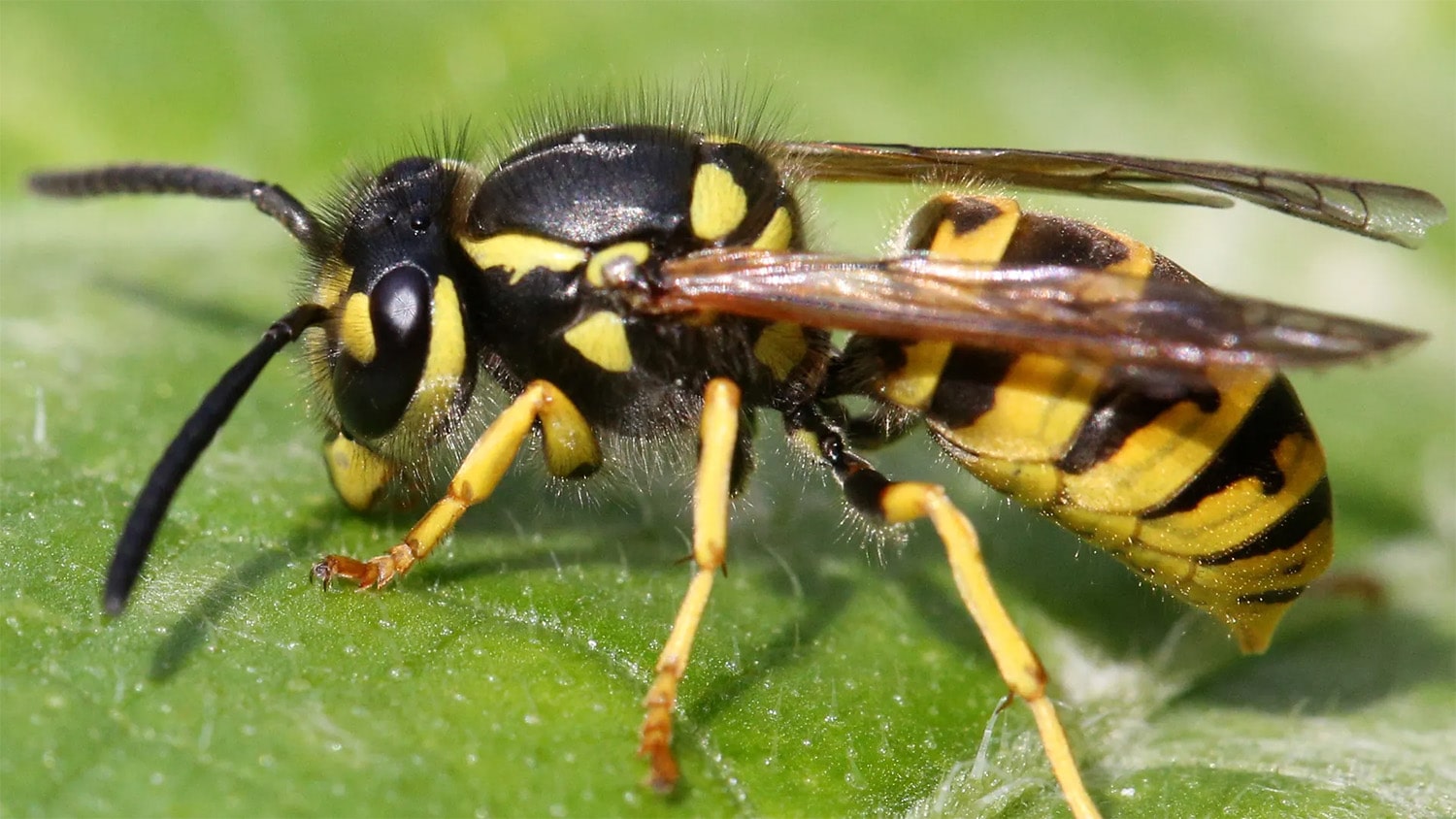
38 interesting facts about yellow jackets
- 👁️ 372
Yellow jackets, often mistaken for bees, are actually a type of wasp known for their distinctive yellow and black striped bodies. These social insects play a significant role in the ecosystem, particularly in controlling pest populations. However, their aggressive nature and tendency to sting when threatened make them less welcomed by humans, especially during outdoor activities in warmer months. Yellow jackets are fascinating creatures with complex behaviors and life cycles that contribute to their success in diverse environments. Let’s explore some interesting and informative facts about yellow jackets that highlight their characteristics, behavior, and the unique aspects of their social structure.
- Yellow jackets belong to the genus Vespula or Dolichovespula, depending on their species.
- Unlike bees, yellow jackets can sting multiple times because their stingers are not barbed and do not get stuck in their victim’s skin.
- They are primarily found in the Northern Hemisphere, with a high concentration in North America.
- Yellow jackets are known for their paper-like nests, which they build by chewing wood fibers mixed with their saliva.
- The queen starts a new colony each spring after emerging from hibernation. She raises an initial batch of worker offspring, which then take over the duties of expanding the nest and foraging for food.
- A single colony can contain thousands of yellow jackets by the end of the summer.
- Yellow jackets are considered omnivorous; their diet includes insects, human food, and sugary substances.
- In the fall, new queens and male yellow jackets are produced for the purpose of mating. After mating, the males die, and the fertilized queens seek shelter to overwinter.
- Yellow jacket stings release a pheromone that can attract more yellow jackets, potentially leading to a swarm attack.
- Unlike bees, yellow jackets are often aggressive with little provocation, especially near their nests.
- The venom from a yellow jacket sting can cause significant pain and swelling and may trigger allergic reactions in some individuals.
- Yellow jackets play a critical role in controlling pest populations, as they feed on caterpillars, flies, and other insects.
- Their nests can be found in various locations, including underground, in hollow trees, under eaves, and inside attics or wall cavities.
- Yellow jackets are more likely to scavenge in human-populated areas towards the end of summer and early fall when their natural food sources become scarce.
- They have been observed to invade bee hives to steal honey.
- The worker yellow jackets, which are all female, are responsible for foraging for food, caring for the queen’s offspring, and protecting the nest.
- Yellow jackets typically live only one season. However, the queen can live for about a year.
- Their nests are usually not reused the following year.
- In some cultures, yellow jackets are considered a delicacy and are eaten as a protein source.
- The coloration of yellow jackets is a form of aposematic signaling, warning potential predators of their ability to sting.
- Some species of yellow jackets build aerial nests that can hang from trees or structures.
- The largest yellow jacket nest ever found was over 12 feet long and housed an estimated 1 million yellow jackets.
- Yellow jackets are more active during the day and return to their nests at night.
- Environmental factors such as temperature and food availability can influence the size of a yellow jacket colony.
- Disturbing a nest can provoke yellow jackets to defend it aggressively, leading to multiple stings.
- Trapping and removal of yellow jackets should be conducted with caution and, ideally, by professionals, especially in the case of large nests.
- Some bird species, like the red-throated caracara, are known to feed on yellow jacket larvae despite the risk of being stung.
- Yellow jackets are sometimes used in research to understand social behavior and communication among insects.
- The nest of yellow jackets is made up of a series of combs, similar to that of bees but made from paper-like material instead of wax.
- Climate change is affecting the behavior and distribution of yellow jackets, with warmer temperatures potentially leading to longer active seasons.
- Yellow jackets have few natural predators, but skunks are known to dig up and eat yellow jacket nests.
- The population dynamics of yellow jackets can significantly impact local ecosystems, particularly through their predation on other insects.
- Yellow jackets’ ability to sting and their aggressive nature are primarily defensive mechanisms used to protect their colony.
- Dead yellow jackets can still sting if their stingers are touched.
- Certain insecticides used to control yellow jacket populations can also harm beneficial insect species.
- In agriculture, yellow jackets are sometimes considered beneficial due to their predation on crop pests.
- The eyes of yellow jackets are kidney-shaped, distinguishing them from some other wasp species.
- Yellow jackets are less active in cooler temperatures and can become sluggish, making it easier to evade or remove them.
Yellow jackets, despite their notorious reputation for aggressive behavior and painful stings, play an important role in our ecosystems as predators of pest species and scavengers. Their complex social structures and behaviors reflect the intricacies of insect life, offering valuable insights into the balance of nature. While caution is advised when dealing with or encountering yellow jackets, especially near their nests, understanding their ecological contributions and life cycle can foster a greater appreciation for these often misunderstood insects. As we continue to study and coexist with yellow jackets, it’s crucial to manage interactions responsibly to minimize harm to both humans and yellow jackets.
Yellow jackets, often mistaken for bees, are actually a type of wasp known for their distinctive yellow and black striped bodies. These social insects play a significant role in the ecosystem, particularly in controlling pest populations. However, their aggressive nature and tendency to sting when threatened make them less welcomed…